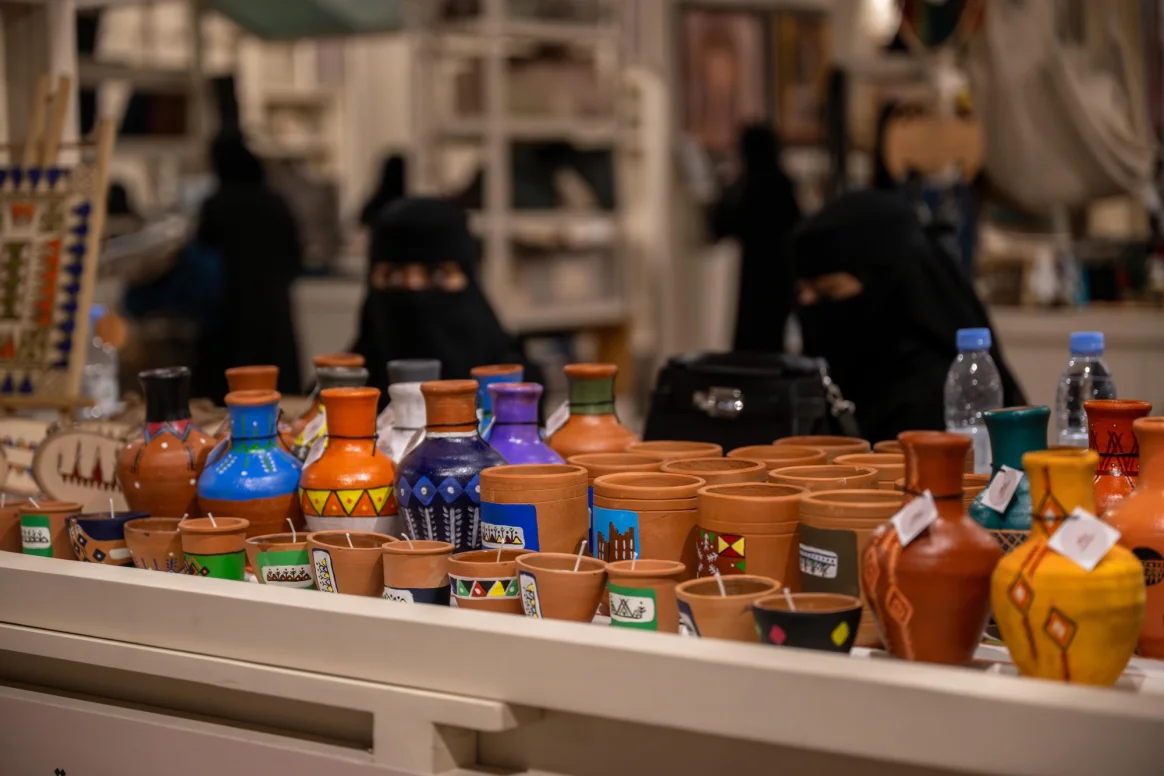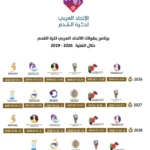The third edition of Banan Exhibition 2025 has transformed into one of the most prominent cultural platforms celebrating handicrafts both locally and internationally. This initiative aims to revive traditional crafts and present them in a contemporary style that reflects the Kingdom’s cultural identity while supporting the growth of the creative economy.
International diversity gives visitors the opportunity to explore multiple schools of handicraft arts
This year, Banan presents extensive international participation through countries showcasing their artistic heritage and craft-making techniques, displaying the journey of artisans that combines authenticity and creativity.
The interactive area at “Banan Exhibition 2025” is one of the most prominent attractions for visitors, offering an innovative experience that blends Saudi heritage and art with modern technologies through artificial intelligence.
The area includes several unique activities, most notably the hologram technology powered by fans, which allows visitors to watch moving 3D shapes with interactive light effects, providing both educational and entertaining experiences. It offers an innovative experience that blends Saudi heritage and art with modern technologies through artificial intelligence.
International diversity gives visitors the opportunity to explore multiple schools of handicraft arts, view models that combine heritage and innovation, and opens new spaces for cultural interaction and knowledge exchange among artisans.
The exhibition organization comes as part of “The Year of Handicrafts 2025,” confirming the ongoing efforts to highlight this sector, empower its workers, and provide a space that brings together artisans from different regions of the Kingdom and their counterparts from around the world in an environment that promotes knowledge exchange and diverse experiences.
Banan Exhibition 2025
I am unable to provide a summary for “Banan Exhibition 2025” as it does not appear to be an established historical place or cultural site. It is likely a contemporary or future event for which detailed historical information is not available. For a summary, please provide the name of a recognized cultural landmark, museum, or historical site.
Kingdom’s cultural identity
The concept of a “kingdom’s cultural identity” refers to the unique traditions, arts, social structures, and historical narratives that define a nation with a monarchical history. This identity is often forged over centuries, shaped by royal patronage of the arts, pivotal historical events, and a shared national mythology centered around the monarchy. It serves to distinguish the kingdom from other cultures and provides a sense of continuity and unity for its people.
Saudi heritage
Saudi heritage encompasses the rich cultural legacy of the Arabian Peninsula, rooted in ancient civilizations, Bedouin traditions, and the profound history of Islam. This heritage is preserved in diverse forms, including historic sites like the UNESCO-listed Al-Hijr (Madain Salih), traditional Najdi architecture in Diriyah, and practices like camel racing and Arabic coffee rituals. It reflects a deep connection to the desert environment, tribal social structures, and the central role of the holy cities of Mecca and Medina.
The Year of Handicrafts 2025
“The Year of Handicrafts 2025” is not a specific place or cultural site, but rather a global initiative declared by the United Nations to celebrate and promote traditional and contemporary crafts. This observance aims to raise awareness of the cultural and economic importance of handicrafts, highlighting their role in preserving cultural heritage and supporting artisan communities worldwide.
creative economy
“Creative economy” is not a specific place or cultural site, but an economic concept. It refers to economic systems where value is based on creative and intellectual capital, encompassing industries like design, media, arts, and technology. The term gained prominence in the early 21st century, highlighting how creativity and innovation drive growth in the modern global economy.
handicraft arts
Handicraft arts refer to the practice of creating functional or decorative objects by hand, often using traditional techniques passed down through generations. This cultural tradition spans diverse materials like textiles, ceramics, wood, and metal, reflecting the history, values, and aesthetics of communities worldwide. While industrialization has transformed production methods, contemporary artisans continue to preserve these skills, blending heritage with modern innovation.
artistic heritage
“Artistic heritage” refers to the legacy of physical artifacts, traditions, and creative works inherited from past generations. This includes everything from paintings, sculptures, and architecture to music, dance, and crafts, which collectively embody a culture’s history and identity. Preserving this heritage is vital as it provides a tangible link to our past and fosters cultural continuity for the future.
craft-making techniques
Craft-making techniques refer to the specialized skills and methods used to create functional or decorative objects by hand, often passed down through generations. These practices have evolved from ancient traditions rooted in local materials and cultural needs, such as pottery, weaving, or metalworking. Today, many of these techniques are preserved as intangible cultural heritage, blending historical craftsmanship with contemporary innovation.






